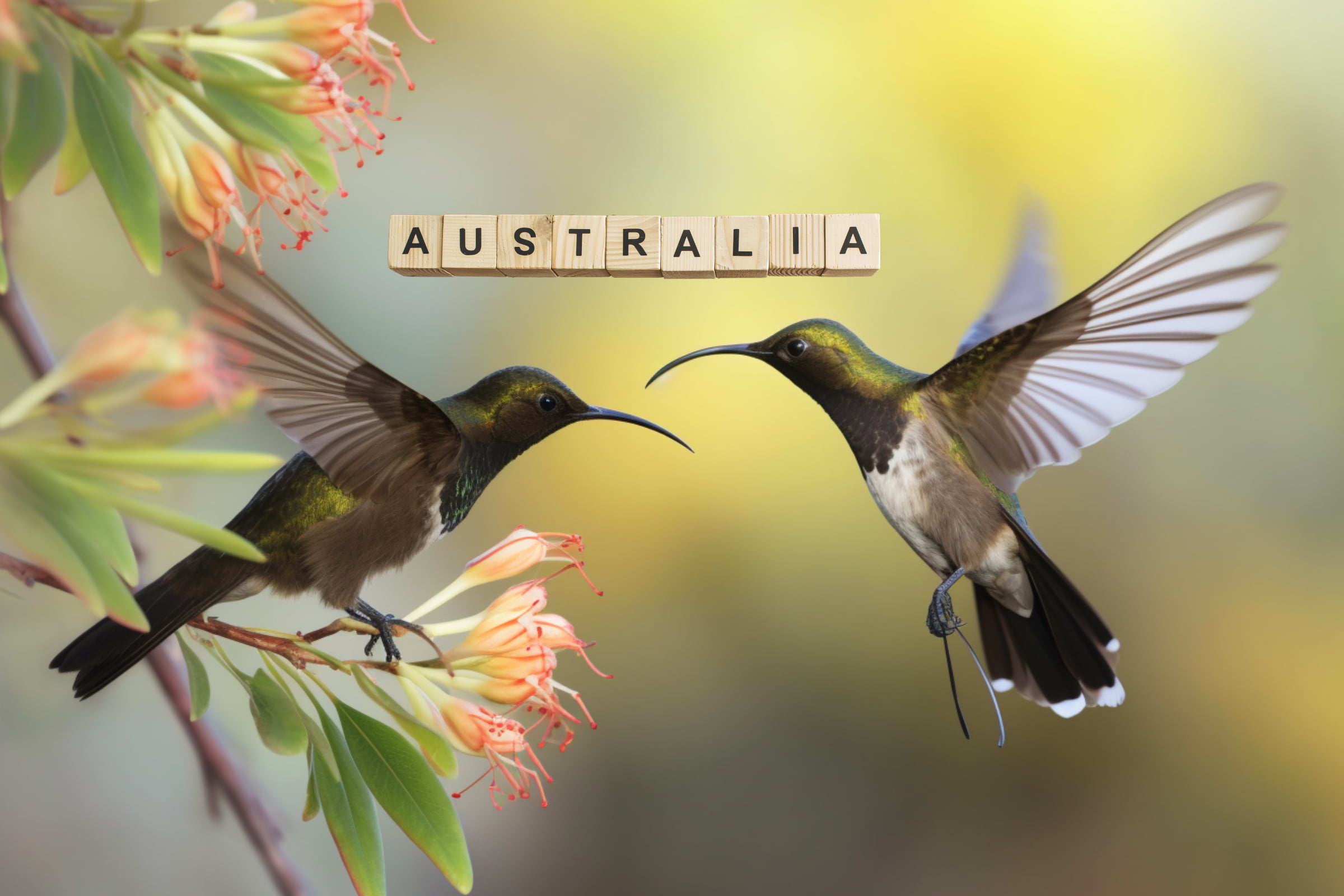Australia is not home to native hummingbirds. Hummingbirds are primarily found in the Americas, ranging from Alaska to Tierra del Fuego. However, Australia does have bird species called honeyeaters that are similar to hummingbirds in some ways. Honeyeaters belong to the Meliphagidae family and, like hummingbirds, feed on nectar from flowers, playing a crucial role in pollination. While some honeyeater species may resemble hummingbirds in appearance and behavior, they are not closely related.
In this article, we will explore the differences between hummingbirds and honeyeaters, the geography of Australia, the native bird species in Australia, and the significance of understanding hummingbirds’ distribution. We will also address frequently asked questions about hummingbirds and provide references for further reading.
The Difference between Hummingbirds and Honeyeaters
Hummingbirds and honeyeaters are two distinct bird families that share some similarities, such as their nectar-feeding habits and roles in pollination. However, they also exhibit notable differences in appearance, behavior, and geographic distribution.
Taxonomy and distribution:
Hummingbirds belong to the family Trochilidae and comprise over 300 species. They are native to the Americas, spanning North, Central, and South America. Some well-known American hummingbirds include the Ruby-throated Hummingbirds, Rufous Hummingbirds, and Blue-throated Hummingbirds. Hummingbirds are not found anywhere else in the world.
Honeyeaters, on the other hand, belong to the family Meliphagidae and are native to Australia, New Guinea, and surrounding islands. They are not found in the Americas.
Size and appearance:
Hummingbirds are generally small, with most species measuring 3-5 inches in body length. They have iridescent plumage that often displays vibrant colors, such as green hummingbirds and other striking hues.
Honeyeaters come in a wider range of sizes, from small birds like the Eastern Spinebill (around 5.5 inches) to larger ones like the Noisy Friarbird (up to 13 inches). Their plumage is often less vibrant than that of hummingbirds, although some species do have bright colors.
Flight and feeding behavior:
Hummingbirds have unique hovering abilities, which allow them to feed on nectar from flowers while suspended in mid-air. They achieve this through rapid wingbeats, which can reach up to 80 beats per second. Their diet primarily consists of nectar, but they also consume insects and spiders for protein.
Honeyeaters, while also feeding on nectar, do not possess the same hovering ability as hummingbirds. Instead, they generally perch on branches or use their feet to cling to flowers while feeding. Some species of honeyeaters also feed on insects and fruit.
Bill, tongue structure, and hummingbird song production:
Hummingbirds have long, slender bills adapted for sipping nectar from tubular flowers. Their tongue is forked and functions like a micro pump, allowing them to efficiently extract nectar. Hummingbirds also have a unique vocal organ called the syrinx, which enables them to produce complex songs and calls.
Honeyeaters have bills that vary in size and shape, depending on their feeding habits. Some species have curved, slender bills for extracting nectar, while others have sturdier bills for catching insects or manipulating fruit. Honeyeaters also have a brush-tipped tongue with bristles that help them collect nectar.
Reproduction and nesting:
Hummingbirds typically build small, cup-shaped nests using plant fibers, spider silk, and other materials. The female lays two eggs and is solely responsible for incubating them and raising the chicks.
Honeyeater nesting habits vary by species, but many construct cup-shaped or domed nests using plant fibers, bark, and sometimes mud. The number of eggs laid can range from one to four, and both parents usually participate in incubation and chick-rearing.
Related species: Hummingbird moths and Hummingbird Hawkmoths:
It’s worth noting that hummingbird moths and Hummingbird Hawkmoths are not birds but rather insects. These moths resemble hummingbirds in their hovering flight and feeding behavior, as they feed on nectar from flowers using their long proboscis. However, they are not related to hummingbirds or honeyeaters.
Geography of Australia
Australia is a vast continent with diverse climates, vegetation, and wildlife. From tropical rainforests in the north to arid deserts in the interior, the country offers a wide range of habitats that support various plant and animal species. Wildflowers, in particular, are abundant in Australia, providing a rich source of nectar for pollinators.
Despite the diverse landscape, hummingbirds are not found in Australia. The absence of hummingbirds in Australia is due to their geographic origin, with all known species native to the Americas. Consequently, hummingbirds have never been part of the Australian ecosystem.
Native Bird Species in Australia
Australia is home to an incredible array of unique bird species, many of which are found nowhere else in the world. From the iconic kookaburra to the colorful lorikeet, the continent’s bird population is truly remarkable. However, hummingbirds are not among Australia’s native bird species.
Introduced Species in Australia
Over the years, various animal species have been introduced to Australia, either intentionally or unintentionally. While some introduced species have had significant negative impacts on the environment and native wildlife, there is no evidence of hummingbirds being introduced to Australia. Given their specific dietary and habitat requirements, it is unlikely that they would thrive in the Australian environment even if introduced.
Similar Species to Hummingbirds
Australia is home to bird species that share some similarities with hummingbirds, such as their appearance and nectar-feeding behavior. One such example is the honeyeater, which belongs to the Meliphagidae family. Honeyeaters play an essential role in pollination and can be found throughout Australia. However, they are distinct from hummingbirds in terms of their evolutionary paths and geographic origins.
Conclusion
In conclusion, there are no hummingbirds in Australia, either as native or introduced species. The unique bird species found in Australia, such as honeyeaters, have evolved separately from hummingbirds and have adapted to the diverse Australian environment. Understanding the presence or absence of specific species in a region helps us appreciate the intricate web of life and the delicate balance of ecosystems. By learning more about the unique wildlife in Australia and around the world, we can better appreciate the planet’s incredible biodiversity and work towards its preservation.
